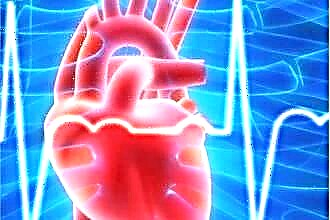The auditory analyzer plays an extremely important role in the perception and recognition of sounds. Hearing preservation is a priority for any pathology affecting the anatomical structures of the ear. Otitis media can develop as a result of abuse of ear cleaning procedures with cotton swabs, with sudden changes in atmospheric pressure. In many patients, it is a complication of acute respiratory illness. Otitis media is classified according to the area of the lesion, with inflammation of the outer and middle ear being the most common. The disease can occur acutely, therefore, first aid for otitis media at home is necessary for all patients.
Classification

Otitis media is a collective concept that includes several definitions depending on the localization of pathological changes, the nature of the course and the prevalence of the pathological process. Treatment of otitis media at home in adults may be required both in the acute form and in the exacerbation of the chronic one. However, there are fundamental differences in the choice of therapy, which makes it necessary to know which variant of the disease the patient has encountered.
The classifications used in modern medicine are quite diverse and often include a large number of forms of the disease. Simplifying the existing descriptions, it is possible to distinguish such types of otitis media as:
- outer;
- average;
- interior.
Further differentiation depends on the etiology of the disease. Fungal otitis media are called otomycosis; there are also bacterial and viral inflammatory lesions, among which otitis media is sometimes considered separately. Since inflammation of the outer, middle and inner ear proceeds differently, the treatment of otitis media at home also differs.
The diagnosis of otitis media can only be established by a doctor; objective symptoms are not always enough for an accurate judgment about the variant of pathology.
Symptoms
When describing the manifestations of inflammation of the external ear, it is necessary to name such symptoms as:
- swelling, redness;
- increase in local temperature;
- pain in the affected area;

- itching sensation of the skin of the ear canal;
- discharge of pus from the ear.
With otomycosis, plaque is visible on the skin of the outer ear structures. The patient complains of itching, soreness. Treatment of mycotic otitis media at home is possible with the preliminary selection of a therapy regimen by a doctor.
Acute otitis media is manifested by:
- Weakness.
- Fever.
- Ear pain.
- Discharge of pus.
- Hearing impairment.
The pain is most intense before the perforation of the tympanic membrane, subsides after the breakthrough of pus and the onset of suppuration. The symptoms of otitis media are usually acute.
Internal otitis media is called labyrinthitis. Unlike the previously named options, this disease is much less common. Its development can be due to various reasons - including inadequate therapy for otitis media. Dizziness, which occurs in the form of seizures, is considered one of the most striking symptoms. Even an attempt to turn the head causes increased nausea and leads to vomiting; the patient has a change in the color of the skin of the face, and profuse sweating occurs.
It is impossible to cure otitis media at home in case of damage to the inner ear; only inpatient therapy is indicated.
Treatment principles
Home treatment for ear inflammation cannot be recommended as the optimal therapy. It is rather an extreme measure due to the lack of access to qualified medical care. Home treatment should be discussed only as activities that are carried out before consulting a doctor. They are aimed at alleviating the patient's condition - in that including to reduce the intensity of pain, which can be pronounced in acute purulent otitis media.
including to reduce the intensity of pain, which can be pronounced in acute purulent otitis media.
When treating any variant of the disease, general recommendations are relevant:
- diet with the exception of spicy, fatty, spicy foods, alcohol;
- control of fluid intake;
- holding the toilet of the ears in the presence of discharge.
In the vast majority of cases, antibiotic therapy is required. Many patients are interested in how to quickly cure otitis media at home. At the same time, it is necessary to understand: the expectation of the effect of antibacterial agents takes several days, and in a matter of hours the pathological process cannot be stopped.
Before using topical preparations, the ear should be cleaned of discharge.
Cleansing the ear canal is carried out using saline, furacilin solution or other drugs recommended by the doctor. Ear toilet is a preparatory stage before the introduction of local forms of antibiotics, antimycotics, any other medicines in the form of drops and ointments.
Otitis externa
If ear inflammation occurs, home treatment may include:
- Limitation of irritation (rest for the affected area).
- Elimination of provoking factors that increase inflammation.
- Removal of secretions from the surface of the skin of the auricle, from the ear canal.
- Introduction of drops and ointments into the ear canal after cleansing the skin.
To understand how to treat otitis media at home, you must first clarify the diagnosis. Fungal infection requires the use of antimycotics, and microbial infection requires antibiotics. For some forms of the disease, combination drugs may be useful - for example, Candibiotic. These are ear drops, which include an antibiotic (chloramphenicol), a glucocorticosteroid (beclomethasone), an antimycotic agent (clotrimazole), and a local anesthetic (lidocaine).
Otitis media
How to cure otitis media at home? With inflammation of the middle ear, it should be remembered: the earlier the doctor examines the patient, the higher the chance of starting treatment before the serous process turns into a purulent one. The development of a purulent form is accompanied by severe pain, which is often compared to a toothache - it is very difficult to endure it. In adults, home treatment of otitis media can cause serious complications.
Since it can be dangerous to treat ear inflammation at home, the patient should be taken to a hospital where qualified assistance will be provided. It is not always possible to limit oneself to conservative therapy, but surgical intervention will be less traumatic if carried out in a timely manner. However, it can take a long time before the patient is examined by a doctor, especially if the medical facility is very far away. It is permissible to use:
- vasoconstrictor drops (naphazoline);
- ear drops (Otipax);
- putting on a cap, scarves.
Closing the ear with a dry, clean cloth, cotton wool can slightly reduce pain. Dry heat, nasal drops, and ear drops are temporary remedies. It is worth remembering that drops without a doctor's prescription are not recommended for use with perforation of the tympanic membrane. Severe pain is observed in the pre-perforated stage, and relief is observed after perforation. These signs should be guided by, providing first aid to the patient and deciding how to treat otitis media at home.
In case of purulent otitis media, in no case should you use hot heating pads and other methods of active warming.
Internal otitis media
Treatment of internal otitis media at home, as mentioned before, should not be carried out. This disease is not always easy to identify, and a number of complex diagnostic tests are required to confirm its presence.Symptoms of an acute course leave no doubt about the severity of the patient's condition, therefore, the appointment of therapy must be carried out subject to constant monitoring of the effectiveness by the attending physician.
Labyrinthitis can lead to complete hearing loss on the affected side.
Labyrinthitis treatment is divided as:
- Conservative.
- Operational.
As a conservative therapy, antibacterial, antihistamines, anti-inflammatory drugs, diuretics are prescribed. For the relief of attacks of dizziness, agents are shown that inhibit the activity of vestibular receptors (vestibulolytics). Surgical intervention is performed with the aim of revising and sanitizing the purulent focus.
How to treat otitis media at home? Before admission to a medical institution, the patient must be provided with peace, protect him from injuries that may occur during attacks of dizziness. The volume of liquid drunk is limited, and the amount of salt in the diet is reduced to 0.5 g per day.




